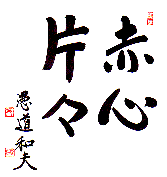“In general, a quiet room is good for practicing [Za]zen, and food and drink are taken in moderation. Cast aside all involvements. Give the myriad things a rest. Do not think of good and bad. Do not consider right and wrong. Stop the driving movement of mind, will, consciousness. Cease intellectual consideration through images, thoughts, and reflections. Do not aim to become a buddha. How could [this] be connected with sitting or lying down?”
– Quotations from Master Dogen’s Fukanzazengi, in italics.
We usually spread a thick mat on the place where we sit, and use a round cushion on top of that.
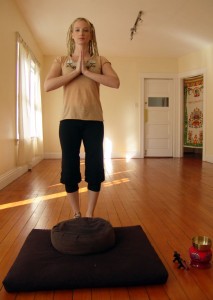 |
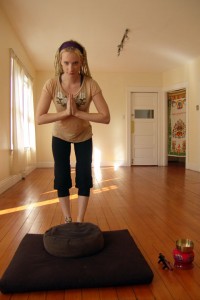 |
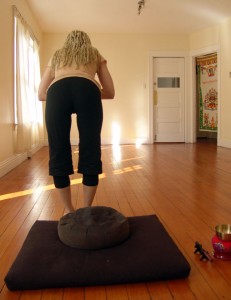 |
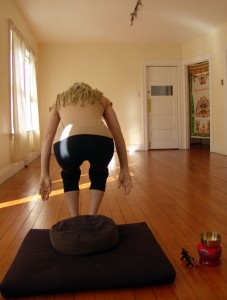 |
1) Approach the cushion
and hold your hands in gassho. |
2) Then make a bow
towards the cushion. |
3) Turn to your right (clockwise)
and bow away from the cushion. |
4) Sit on the cushion. |
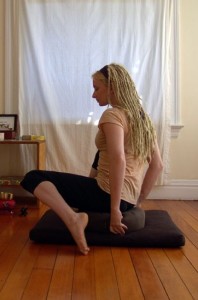 |
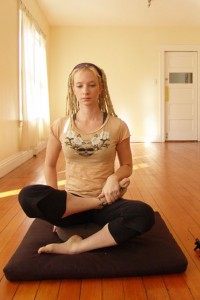 |
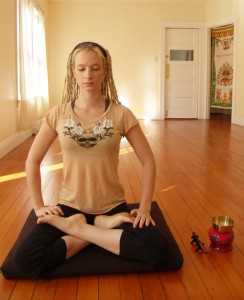 |
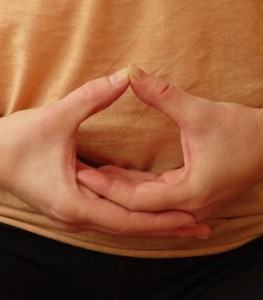 |
5) Rotate towards your
right (clockwise) until
you’re facing the wall. |
6) Either sit in the full
lotus posture or the half
lotus posture. |
7) To sit in the full lotus posture,
first put the right foot on the left
thigh, then put the left foot on
the right thigh. To sit in the
half lotus posture, just press the
left foot onto the right thigh. |
8) Then put the right hand
above the left foot, and
place the left hand on the
right palm. The thumbs meet
and support each other. |
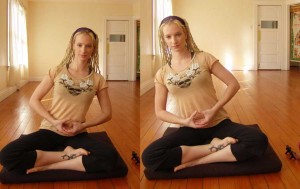 |
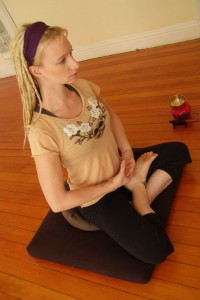 |
9) Many practitioners find it useful to sway left
and right to find the spot where the spine balances
on top of the hips. |
10) Just make the body right and sit up straight.
Do not lean to the left, incline to the right, slouch forward, or lean
backward. The ears must be aligned with the shoulders, and the nose
aligned with the navel. Hold the tongue against the palate, keep the
lips and teeth closed, and keep the eyes open.
Breathe softly through the nose. |
When the physical posture is already settled, make one complete exhalation and sway left and right. Sitting immovably in the mountain-still state, “Think about this concrete state beyond thinking.” “How can the state beyond thinking be thought about?” “It is different from thinking.” This is just the pivot of Zazen.
A bell will ring three times to signal the beginning of practice.
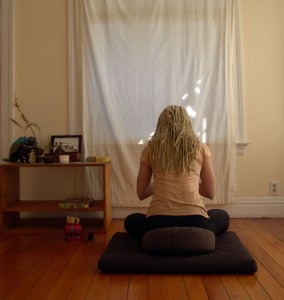 |
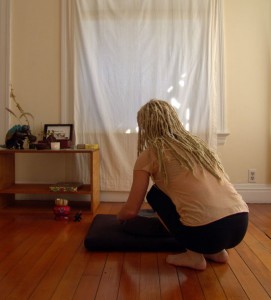 |
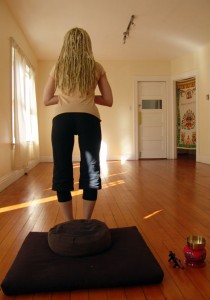 |
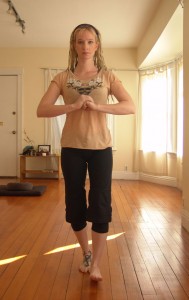 |
11) When the bell rings to
signal the end of practice,
make a bow towards the wall.
When we rise from sitting, we
should move the body slowly, and
stand up calmly. We should
not be hurried or violent. |
12) Fluff up your cushion. |
13) Stand up and once more bow
towards and away from the cushion
(always turning clockwise). |
14) If kinhin (walking
zazen) follows, turn to your
left and begin walking slowly. |
 |
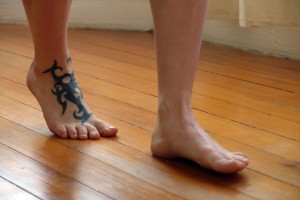 |
| 15) The hands are placed as shown. The left hand forms a fist with the thumb inside and the right hand goes on top of it. The arms are bent so that the hands meet at the solar plexus. |
16) Walk at a pace of about one step per breath. When the bell rings to end kinhin, walk at a normal pace back to your cushion. Always go forward. If you have passed your own cushion by only a small amount you still must walk all the way around the zendo and back to it. |
Make your bows towards and way from the cushion again. If another period of sitting practice follows, begin again. If the practice is ending after kinhin, wait at your cushion and make a bow together with everyone in the room.
Thanks to LizaRose for modelling the postures and Svetlana Dekic for taking the photos!
















